Introduction – What exactly is a MOOC and how does it work?

Disclosure: This content includes promotional links whereby we may be paid when you visit links to partner sites at no additional cost to you
A massive open online course (MOOC for short) is an online course that allows for unlimited participation and open access via the Internet. Many MOOCs offer interactive courses with user forums or social media discussions to foster community interactions among students, professors, and teaching assistants. They were first introduced in 2008 and became popular in 2012.
Some of the best LMS platforms for small businesses & startups can include some portions of MOOCs however often are vastly different as LMS platforms are more closely associated with traditional learning models whilst a MOOC tends to be more decentralized and filled with independently created content.
The first MOOCs arose as a result of the open educational resources (OER) movement, which was sparked by the MIT OpenCourseWare project.
Dave Cormier of the University of Prince Edward Island coined the term MOOC in 2008 in response to a course called Connectivism and Connective Knowledge (CCK08). CCK08 had 25 tuition-paying students and over 2200 free online students from the general public. Other cMOOCs followed, which transformed existing distance learning offerings (such as podcasts) into free and open online courses.
Background history

The first MOOCs arose as a result of the open educational resources (OER) movement, which was sparked by the MIT OpenCourseWare project. Dave Cormier of the University of Prince Edward Island coined the term MOOC in 2008 in response to a course called Connectivism and Connective Knowledge (CCK08).
CCK08 had 25 tuition-paying students and over 2200 free online students from the general public. Other cMOOCs followed, which transformed existing distance learning offerings (such as podcasts) into free and open online courses.
The concept has now grown significantly as online platforms have emerged which provide marketplaces for educators of all types to provide their course material for free or for a flat/subscription fee.
This has enabled many more people to learn about different subjects without going through conventional educational institutions such as universities or training organizations.
Notable providers
Coursera
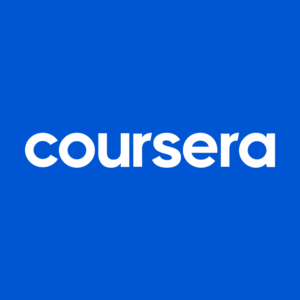
Coursera is a popular online platform founded in the United States by 2 former Stanford University computer science students and contains a wide variety of course material in subjects including but not limited to:
- Science
- Arts
- International Relations, Security, and Strategy
- Technology
- Engineering
- Mathematics
- Social science
In addition to the large collection of material one of the main features of Coursera is their collaboration with different universities such as PennState University, Stanford, Harvard, Imperial College of London, University of Michigan, and many more which they partner with giving you the option to earn an online degree through the platform.
Udemy

Udemy is another popular option that has been around for quite some time originally founded back in 2010 and grown into a massive library of 3rd party content creators selling and providing courses for free.
The main focus on Udemy is 3rd party educators so there isn’t as much content geared towards universities like Coursera however there is still lots of useful content on a wide variety of topics including the ones listed above.
Khan Academy
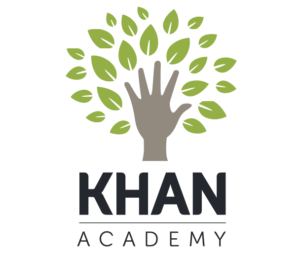
Khan Academy is another well-known name in the space and was founded by Sal Khan and has been providing 100% free content for a long time as a nonprofit organization.
While it has its initial roots in science and math subjects Khan Academy over the years has expanded to offer a number of other lectures in fields such as English, History, and over 8000+ courses.
EdX
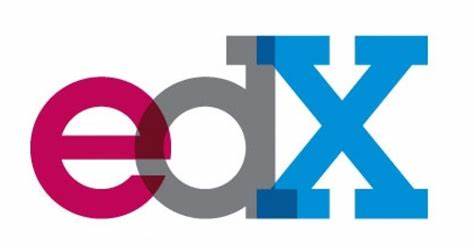
This last site is more comparable with Coursera and provides a large library of content with subjects such as science, math and much more.
It was founded both by Harvard University and MIT and also partners with other educational institutions to provide university-level courses where students can also earn online qualifications for their chosen fields.
Skillshare

Skillshare is another popular platform that hosts a wide variety of course material ranging from science to music and photography.
Udacity
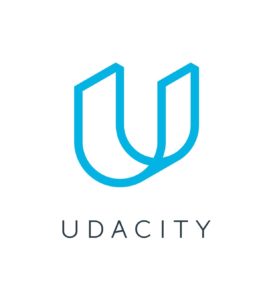
Sebastian Thrun, David Stavens, and Mike Sokolsky founded Udacity, Inc., an American for-profit educational organization. It began with university-style courses but has since shifted to vocational courses for professionals. It grew out of free computer science classes offered by Stanford University in 2011.
Thrun has stated that he hopes to enroll half a million students, following the enrolment of 160,000 students in the predecessor course at Stanford.
Udacity includes a large number of topics amongst its repository of courses including but not limited to:
- Business
- Autonomous systems (vehicles and similar technologies)
- Cloud computing
- Programming
- Statistics & data science
- Business Analytics
- Project Management
Duolingo
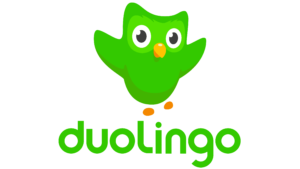
Duolingo is a popular app for learning different languages and can be used from a web browser on any type of computer as well as mobile via Android and iOS applications. Duolingo is not a traditional MOOC but could be considered one technically due to its variety of materials and ease of access.
Some of the languages include English, Spanish, German, Mandarin, Arabic, Russian, and many other languages.
FutureLearn

FutureLearn is a digital education platform based in the United Kingdom that was founded in December 2012. The Open University and SEEK Ltd jointly own the company.
It is one of Europe’s largest course platforms and contains a huge collection of course material from a range of different universities across European countries, UK and internationally including:
-
- University of Adelaide
- University of Birmingham
- University of Cape Town
- Institut Français de la Mode (IFM)
- The University of Edinburgh
- University of Aberdeen
- University of Canterbury
Advantages of the model

- Many courses are available for free or available at a low cost which makes them more accessible compared to traditional education
- Can be done remotely in any country as long as you have a reasonable internet connection
- Can be great to get an idea of a topic to see if you’re interested without committing to an expensive university degree
- Cost-effective for educators as they can record and provide unlimited access to their material without having to re-explain the topic over and over again
- Students can complete courses according to their schedule at a time that suits them best
- Options to get a qualification from a university or organization depending on the MOOC platform
Disadvantages of the model

- No special one on one attention or consideration for disability, language difficulty or other factors that are addressed in traditional education settings
- Can have high attrition rates as most content is free so students may not feel obliged to complete their courses if they didn’t invest any money towards it
- Students must be self-disciplined to complete their courses and manage their time as they won’t have strict rules like universities for submissions so some students may find it harder to stay accountable
- Lack of social interaction which makes it harder to ask questions or network with other peers taking the same course
What’s a COOC (Corporate Open Online Course)

A COOC is another variation of this technology and is aimed at the corporate world and is broken into 2 key categories “internal” and “external”.
These tools are used by companies to produce training content in a course format for in-house use by staff or to release for a fee or free for external people to use outside the company.
An example of a COOC is Open-SAP which was created by a German technology company called SAP to provide training material. Other companies have also launched their own COOC’s such as the Bank Of America which had a joint partnership with Khan Academy to provide courses around investing, savings etc.
COOC’s are usually preferred by corporations for internal use and are virtually the same as MOOC’s however the latter is focused on open distributed access to content whilst COOC’s are generally private.
Why businesses utilize COOC’s:
Innovate and improve employee skills
The first reason why companies use COOC’s is to upskill their teams which aids companies in innovating within their field and working on new projects, Research/development etc.
Improving efficiency and ultimately profitability
It’s often said time is money and by investing early on to teach staff extra skills they will get better at their jobs and more productive helping to create cost savings and more profitability for the business.
Quality at scale
By leveraging web formats quality educational material can be delivered “at scale” to many workers in a large organization.
Employee engagement
As opposed to traditional lectures and courses delivered in person these electronic courses can be consumed at convenient times and on different devices making them ideal for busy staff and can be more engaging and not feel like school due to its flexibility.
MOOC statistics

Participant completion rates in MOOCs are typically in the range of 3–10%
Source: Wiley.com
20% of college students report that they completed 100% of their online coursework on a phone or tablet
Source: Statista.com
The average online course is priced at $137
Source: Podia.com research
COOC statistics

94 percent of employees say that they would stay at a company longer if it invested in their career development
Source: LinkedIn study
Every dollar invested in online training results in $30 for a company.
Source: Forbes
40% of employees who receive poor job training leave their positions within the first year.
Source: Forbes
Frequently asked questions about MOOC’s

What are some of the characteristics of massive open online courses?
These courses are widely available due to being published online often but not always free and provided by recognized authors or institutions. In addition, they are usually collaborative in nature and allow commenting and other interactive elements as well as limited in time and scope.
Can anyone enroll in MOOC?
In most cases, MOOCs don’t place restrictions on who can enroll and consume the content being offered however some platforms may require payment or registration before you can access the course material.
Can MOOCs help you get a job?
Some MOOCs do provide valid qualifications and certificates you can showcase on your CV or resume which may help improve your chances of securing a job in your field.
Further completion of relevant courses can show your willingness to learn and acquire new skills which can help improve your chances of getting a job.
Conclusion

All up MOOCs provide a great way to distribute course material and make it far more accessible in comparison to traditional education methods however is a complementary component with traditional models and can work well for many types of students either in a standalone environment or in tandem with in-person lectures.
We hope you found this page to be helpful, if so be sure to share it and check out our blog for more content and technical resources.
Related content on our glossary:
Learning Management System (e-learning software)
The Best Interactive Whiteboards
Virtual classroom / learning environment
*Source(s) cited/bibliography:
“Massive open online course” Wikipedia, 10 July 2011, en.wikipedia.org/wiki/Massive_open_online_course. Accessed 3 Jan. 2023.
“Massive Open Online Course (MOOC)” EDUCAUSE, 15 Jan. 2015, library.educause.edu/topics/teaching-and-learning/massive-open-online-course-mooc. Accessed 3 Jan. 2023.
“ScienceDirect”, [Online]. Available: https://www.sciencedirect.com/topics/social-sciences/massive-open-online-course. [Accessed: 3-Jan.-2023].
“Benefits of Massive Open Online Course Participation: Deductive Thematic Analysis” PubMed, pubmed.ncbi.nlm.nih.gov/32672680/. Accessed 3 Jan. 2023.
“Udemy” Wikipedia, 23 Aug. 2011, en.wikipedia.org/wiki/Udemy. Accessed 3 Jan. 2023.
Khan Academy, Wikipedia (Nov. 27, 2009), https://en.wikipedia.org/wiki/Khan_Academy.
(2012). edX [Online]. Wikipedia. Available at: https://en.wikipedia.org/wiki/EdX (Accessed: 3 January 2023).
“Massive Open Online Courses (MOOCs) Market Growing at a CAGR of 32.8% during 2021-2026, Growing Popularity, Booming Segments, Emerging Trends and Investors Seeking Growth, Top Players: Coursera, edX,Intellipaat, Udemy, LinkedIn, Simplilear” 16 Mar. 2021, www.globenewswire.com/en/news-release/2021/01/06/2154487/0/en/Massive-Open-Online-Courses-MOOCs-Market-Growing-at-a-CAGR-of-32-8-during-2021-2026-Growing-Popularity-Booming-Segments-Emerging-Trends-and-Investors-Seeking-Growth-Top-Players-Cou.html. Accessed 16 Feb. 2023.
“Bera-Journals.Onlinelibrary.Wiley.Com” bera-journals.onlinelibrary.wiley.com/doi/10.1111/bjet.12504. Accessed 16 Feb. 2023.
“El_2018” 11 July 2018, files.eric.ed.gov/fulltext/files.eric.ed.gov/fulltext/ED590297.pdf. Accessed 16 Feb. 2023.
Duffin, Erin. “Extent of mobile device usage for online course-related activities U.S. 2018” Statista, 13 July 2020, www.statista.com/statistics/944977/usa-extent-of-mobile-device-usage-for-online-course-related-activities/. Accessed 16 Feb. 2023.
Lauren, (2021). How much should you charge for your online course? (132,000+ data analysis) [Online]. Podia. Available at: https://www.podia.com/articles/how-much-should-you-charge-for-your-online-course (Accessed: 16 February 2023).
“openSAP” Wikipedia, 8 May 2013, en.wikipedia.org/wiki/OpenSAP. Accessed 29 Mar. 2023.
K. Academy, “Khan Academy’s Efforts to Keep Everyone Learning Gains Major New Support from Bank of America”, 17-Mar.-2020. [Online]. Available: https://www.prnewswire.com/news-releases/khan-academys-efforts-to-keep-everyone-learning-gains-major-new-support-from-bank-of-america-301025840.html. [Accessed: 29-Mar.-2023].
“MOOC (Massive Open Online Course): The Key Facts” Edukatico.org, www.edukatico.org/en/report/mooc-massive-open-online-course-the-key-facts. Accessed 2 Apr. 2023.
“FutureLearn” Wikipedia, 27 Apr. 2013, en.wikipedia.org/wiki/FutureLearn. Accessed 2 Apr. 2023.
Udacity. Wikipedia. https://en.wikipedia.org/wiki/Udacity. Published January 26, 2012. Accessed April 2, 2023.
Keswin, E. 3 Ways to Boost Retention Through Professional Development. https://hbr.org/2022/04/3-ways-to-boost-retention-through-professional-development. Published April 5, 2022. Accessed April 4, 2023.
“New Report shows talent development is playing an increasingly strategic role in today’s economy” 27 Feb. 2018, news.linkedin.com/2018/2/linkedin-workplace-learning-report-2018. Accessed 4 Apr. 2023.
Olenski, Steve. “Why C-Levels Need To Think About eLearning And Artificial Intelligence.” February 6, 2017. Accessed April 4, 2023. https://www.forbes.com/sites/steveolenski/2017/02/06/why-c-levels-need-to-think-about-e-learning-and-artificial-intelligence/?sh=5d447a53ff70.
![logo-new-23[1] logo-new-23[1]](https://agrtech.com.au/wp-content/uploads/elementor/thumbs/logo-new-231-qad2sqbr9f0wlvza81xod18hkirbk9apc0elfhpco4.png)
